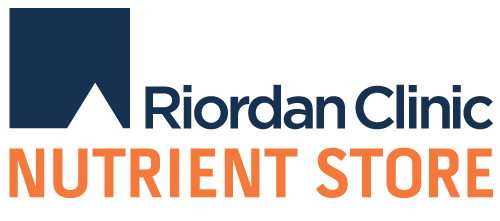Vitamin C: Nature's Viral Enemy
Posted by Laurie Roth Donnell on Feb 12th 2014
 Each person’s need for vitamin C differs because of genetics and individual biochemistry. Further, our bodies undergo different stresses and we all eat different foods. Therefore, the daily need for ascorbate to maintain health for an adult varies between 2,000 – 20,000 mg/day. Linus Pauling personally took 18,000 mg of vitamin C daily and was ridiculed for this; it is interesting to note that Dr. Pauling had two more Nobel prizes than any of his critics and lived to the age of 93. Abram Hoffer, MD, a colleague of Pauling’s, also took mega doses of vitamin C and successfully gave it to thousands of patients over 55 years of medical practice; he died at age 91.
Each person’s need for vitamin C differs because of genetics and individual biochemistry. Further, our bodies undergo different stresses and we all eat different foods. Therefore, the daily need for ascorbate to maintain health for an adult varies between 2,000 – 20,000 mg/day. Linus Pauling personally took 18,000 mg of vitamin C daily and was ridiculed for this; it is interesting to note that Dr. Pauling had two more Nobel prizes than any of his critics and lived to the age of 93. Abram Hoffer, MD, a colleague of Pauling’s, also took mega doses of vitamin C and successfully gave it to thousands of patients over 55 years of medical practice; he died at age 91.
Antiviral Function
When we are challenged with a viral infection, our need for vitamin C can raise dramatically, depending on the body’s immune function, level of injury, infection, or environmental toxicity such as cigarette smoke. Ascorbate at sufficiently high doses can prevent viral disease and greatly speed recovery from an acute viral infection. (As seen in Dr. Mikirova’s article on page 1 of this newsletter.) Surprising to some, this was originally observed by physicians in the 1940s, verified, and re-verified over the last 60 years by doctors who achieved quick and complete recovery in their patients with ascorbate mega-doses. The effective therapeutic dose is based on clinical observation and bowel tolerance. Clinical observation is essentially “taking enough C to be symptom free, whatever that amount may be.” Bowel tolerance means exactly what you think it means: the amount that can be absorbed from the gut without causing loose stools.
Very high doses up to 200,000 mg, divided up throughout the day, are remarkably non-toxic and have been documented by physicians as curing viral diseases as various as the common cold, flu, hepatitis, viral pneumonia, and even polio.
Several mechanisms for vitamin C’s antiviral effect are known or suggested from studies while the antioxidant property of ascorbate promotes a reducing environment in the bloodstream and tissues, enhancing the body’s response to oxidative stress from inflammation, thereby helping to fight microbes and viruses that propagate in stressful conditions. Ascorbate has been shown to have specific antiviral effects in which it inactivates the RNA or DNA of viruses, or in the assembly of the virus.
 Vitamin C is also involved in enhancing several functions of the immune system. Ascorbate can enhance the production of interferon, helping prevent cells from being infected by a virus. Ascorbate stimulates the activity of antibodies and in mega doses seems to have a role in mitochondrial energy production. It is thought to enhance phagocyte function, which is the body’s mechanism for removing viral particles and other unwanted debris. White blood cells, involved in the body’s defense against infections of all types, concentrate ascorbate up to 80 times plasma levels, which, if you take enough vitamin C, allows them to bring huge amounts of ascorbate to the site of the infection. Many different components of the immune response, B-cells, T-cells, NK cells, and cytokine production, all with important roles in the immune response, are enhanced by ascorbate and improve the immune response from vaccinations.
Vitamin C is also involved in enhancing several functions of the immune system. Ascorbate can enhance the production of interferon, helping prevent cells from being infected by a virus. Ascorbate stimulates the activity of antibodies and in mega doses seems to have a role in mitochondrial energy production. It is thought to enhance phagocyte function, which is the body’s mechanism for removing viral particles and other unwanted debris. White blood cells, involved in the body’s defense against infections of all types, concentrate ascorbate up to 80 times plasma levels, which, if you take enough vitamin C, allows them to bring huge amounts of ascorbate to the site of the infection. Many different components of the immune response, B-cells, T-cells, NK cells, and cytokine production, all with important roles in the immune response, are enhanced by ascorbate and improve the immune response from vaccinations.
 Vitamin C at high doses is effective in preventing viral infection and enhancing recovery by boosting the body’s cellular immune system. When taken at an appropriate dose in a timely manner, ascorbate is our best tool for curing acute viral illness. Exploration of IVC (intravenous vitamin C) for this and other doctor recommended protocols may be a solution to combating the common viruses that attack anyone at anytime. Consult with your primary care physician regarding IVC therapy and other treatments to combat viruses.
Vitamin C at high doses is effective in preventing viral infection and enhancing recovery by boosting the body’s cellular immune system. When taken at an appropriate dose in a timely manner, ascorbate is our best tool for curing acute viral illness. Exploration of IVC (intravenous vitamin C) for this and other doctor recommended protocols may be a solution to combating the common viruses that attack anyone at anytime. Consult with your primary care physician regarding IVC therapy and other treatments to combat viruses.
Sources:
Williams, Deason G (1967) Proc Natl Acad Sci USA. 57:1638-1641. Individuality in vitamin C needs.
Pauling, L (1986) How to Live Longer And Feel Better, by Linus Pauling (Paperback —May 2006) ISBN-13: 9780870710964
Hoffer A, Saul AW (2009) Orthomolecular Medicine for Everyone: Megavitamin Therapeutics for Families and Physicians. ISBN-13: 9781591202264
Levy TE (2002) Curing the Incurable: Vitamin C, Infectious Diseases, and Toxins. ISBN-13: 9781401069636

